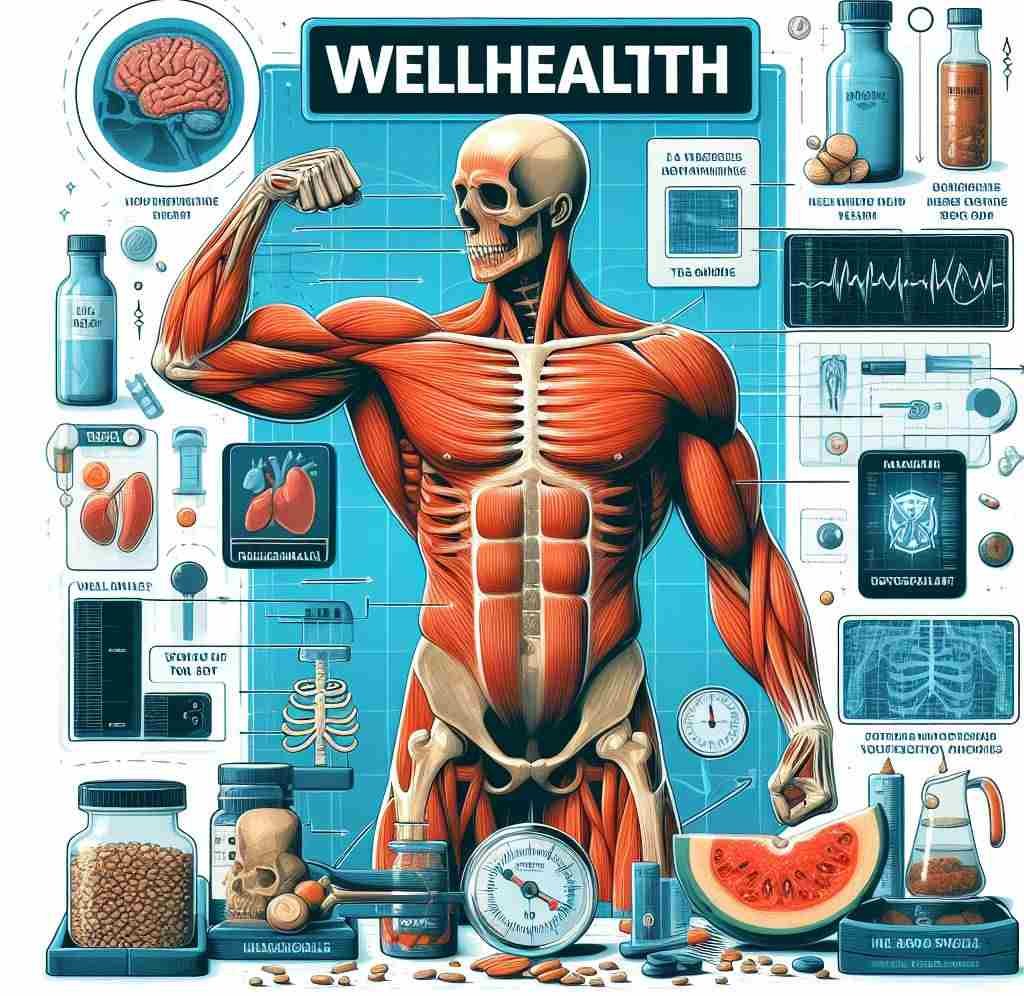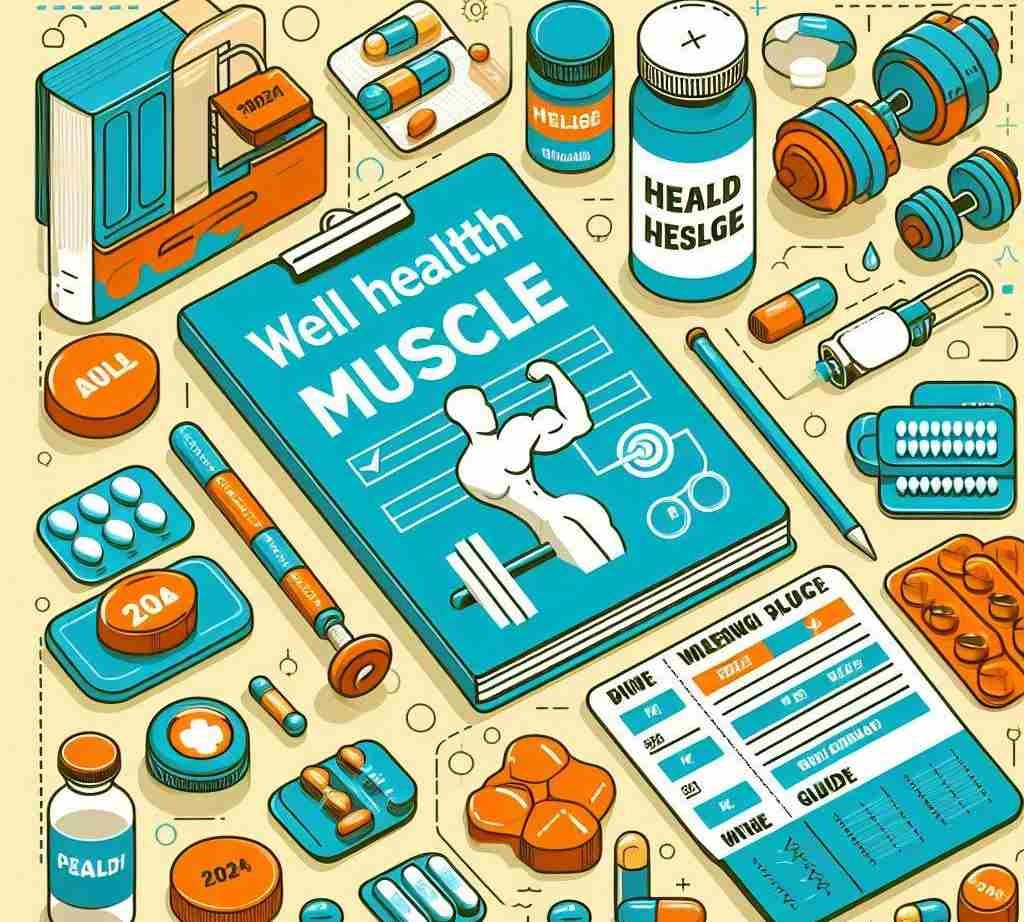As a fitness trainer at Wellhealth, clients frequently ask me, “How do I build muscle effectively?” They want to gain Strength, get toned, or feel more confident. I provide customized guidance to help each person safely achieve their goals. In this guide, I’ll share my methods with clients to build lean muscle through strategic nutrition, properly designed workouts, recovery techniques, and more. Whether you’re new to strength training or looking to take your results to the next level, incorporate these muscle-building tips into your routine.
Set Strength Goals and Assess Your Starting Point

Before creating a muscle-building plan, it’s essential first to identify your goals and starting point. As a trainer, I have an in-depth conversation with each client to understand their aims, experience level, injury history, and lifestyle. This informs the customized program we develop together.
Define Your Goals
Be specific about what you want to accomplish – gain functional Strength. Bulk up? Tone certain areas? Knowing your aims narrow our focus on the best exercises and nutrition plan.
Take Stock of Your Current Fitness Level
Where are you starting from? Have you Strength trained before? Do you currently exercise? This gives me insight into your baseline strength and conditioning to design an appropriate plan to challenge you progressively.
Consider Your Schedule and Commitment
How much time can you devote to training each week? What does the rest of your schedule look like? The program I prescribe must align with your broader commitments so it’s sustainable.
Identify Any Injuries or Limitations
Do you have past or current injuries? Limited mobility or range of motion? I must have this information to modify programs and avoid aggravating existing issues.
By thoroughly assessing clients upfront, I gather the information needed to develop customized plans to help them build muscle successfully and thoughtfully.
Focus on Strength Training 2-4 Times Per Week

My go-to training recommendation for muscle growth is consistent strength training 2-4 times per week. This stimulates your muscles to adapt and get stronger without overtraining. Here are the key factors we focus on:
Train All Major Muscle Groups
Be sure to hit all the major muscle groups with compound exercises like squats, deadlifts, presses, rows, and pull-ups. This leads to balanced development. We target smaller muscle groups with isolation moves as well.
Progressive Overload
The number one driver of muscle growth is progressively overloading muscles over time by lifting heavier weights. I gradually increase resistance as I get stronger.
Moderate Rep Ranges
Lifting in the 6-12 rep range with moderate weight emphasizes muscle growth. We periodically vary between higher and lower reps, too.
Sufficient Rest
Taking 1-3 minute breaks between sets allows your muscles to recover and maintain performance. Get enough rest between sessions as well.
A properly designed strength program can stimulate impressive muscle growth training a few days a week. But nutrition is equally important…
Fuel Muscles with Protein and Quality Calories

Without proper nutrition, your muscles won’t have the raw materials to recover and grow. As your trainer, I provide evidence-based dietary recommendations for your goals and lifestyle. Here are my top nutrition tips to maximize muscle growth:
| Recommendation | Rationale |
|---|---|
| 0.7-1 gram of protein per pound of body weight daily | Protein provides amino acids that repair and build muscle tissue. Most clients see best results consuming 0.7-1 gram per pound. |
| Time 20-40g of protein around workouts | Consuming protein just before and after training allows muscles to utilize aminos efficiently for growth. |
| Focus on lean proteins | Great options include egg whites, chicken, fish, Greek yogurt, cottage cheese, protein powder, beans, and lentils. These provide quality protein without excess calories. |
| Reduce processed carbs | Limit added sugar, refined grains, and heavily processed carbs. These provide empty calories without much nutritional value. |
| Eat plenty of fruits, vegetables, and whole grains | These provide antioxidants, fiber, vitamins, minerals, and healthy complex carbs to fuel training. |
| Stay hydrated daily | Drink about half your body weight in ounces of water daily to deliver nutrients to muscles and prevent cramps. |
As you can see, strategic nutrition targeted around workouts and protein-rich whole foods lays the foundation for muscle growth and optimal performance.
Time Nutrients Around Training
In particular, I advise clients to strategically time their Protein and carb intake around exercise sessions. Here are my top nutrient timing recommendations:
| Phase | Objective | Ideal Nutrition |
|---|---|---|
| Pre-Workout | Top off muscle glycogen stores. Prevent catabolism. | Meal containing 20-40g protein and 20-40g carbs 1-2 hours before training. |
| During Workout | Maintain energy, hydrate muscles. | Sip electrolyte/carb sports drink if training >60 minutes. |
| Post-Workout | Spike muscle protein synthesis. Rapidly replenish glycogen. | 20-40g protein and 30-60g high-GI carbs within 45 minutes post-workout |
Fueling correctly before, during, and after training is crucial to maximize energy, performance, and growth.
Support Muscle Recovery and Regeneration
While challenging strength sessions trigger muscle-building, your results hinge mainly on how effectively your body recovers between workouts. Insufficient recovery hampers performance increase injury risk, and limits muscle gains. As your trainer, I advise clients on science-backed rest and regeneration strategies, including:
Prioritize Sleep
Aim for 7-9 hours of quality sleep per night—growth hormone release peaks during deep sleep, repairing muscle damage from training. Being well-rested lets you train harder.
Try Active Recovery
On off days from lifting, incorporate lighter cardio activities like walking, cycling, or yoga. This increases blood flow to supply nutrients without further fatiguing muscles.
Utilize Soft Tissue Work
Self-myofascial techniques like foam rolling, massage, and stretching encourage muscle repair, improve mobility and prevent injury. These are game-changers for sustainable muscle building.
Manage Stress Levels
High-stress spikes cortisol and inflammation, delaying recovery. I teach clients stress management strategies like meditation, visualization, journaling, and time management.
doubles Time Nutrients Around Training
In addition to fueling muscles before and after workouts, emphasize Protein, carb, and antioxidant-rich meals and snacks throughout the day to promote continual muscle repair and growth.
While intense training does the “heavy lifting” for muscle growth, how you care for your body between sessions largely determines your long-term progress.
Track Progress and Adjust Your Plan
Muscle building is a gradual process, so realistic expectations and quantifiable ways to track progress are imperative. As your trainer, I incorporate multiple metrics and make adjustments along the way, including:
Measure Body Composition
We perform periodic assessments like weighing, photos, body fat analysis, and measurements to quantify changes in muscle mass, body fat, endurance, Strength, and other metrics.
Track Lifting Performance
I log details like the amount of weight lifted, reps performed, rest times, and rating of perceived exertion each session. Improving numbers indicates muscles getting more muscular.
Check Energy Levels and General Wellbeing
I check in on how clients feel during workouts and daily life. Consistently low energy, lack of motivation, or excessive soreness clues me in to potential overtraining or nutrition issues.
Make Program Modifications
Based on all tracking metrics and feedback, I modify programs over time by changing exercises, weights, sets, and reps. I also adjust nutrition plans to fuel new demands or address plateaus.
Ongoing assessment and customization ensure clients continue building muscle optimally while staying healthy, motivated, and injury-free.
| Timeframe | Outcome | Action |
|---|---|---|
| Weekly | Strength, endurance or body comp not improving week to week | Increase weight/reps. Check nutrition/recovery. |
| Every 4 weeks | Metrics plateaued past month | Change exercises, rep ranges, nutrients. Deload if needed. |
| Every 12 weeks | Goals met for current phase | Adjust macro ratios. Set new strength and physique targets. |
The human body is complex and continually evolving. What worked early on won’t always keep producing results months later. Fine-tuning your plan based on metrics prevents plateaus so you can keep making optimal progress.
Bodybuilding Techniques to Maximize Muscle Growth

While a foundation of progressive strength training, strategic nutrition, and muscle recovery lays the groundwork, I have several advanced techniques up my sleeve as a trainer to take clients’ muscle-building to the next level:
Increase Training Frequency
After beginners adapt to 2-4 days a week, we often increase strength training frequency to 4-6 days. More frequent sessions maximize muscle protein synthesis. We balance with careful programming and recovery methods.
Incorporate Eccentric Training
Emphasizing the lowering portion of exercises produces more significant muscle damage, triggering increased adaptations. Eccentric moves like negatives and flies build serious Strength and size.
Use Post-Activation Potentiation
I am lifting moderate weight explosively before going heavy, which recruits more fast-twitch muscle. This post-activation potentiation strategy enables lifting more weight.
Periodize Nutrient Timing
I strategically time carbohydrate intake to fuel different training phases – higher carbs on intense hypertrophy days and lower carbs during lighter strength-focused sessions to improve insulin sensitivity.
Cycle Bulking and Cutting Phases
To maximize muscle gains long-term, we alternate dedicated 8-12 weeks of “bulking phases” in a calorie surplus with 4-8 weeks of “cutting phases” in a deficit before the next growth cycle. Dialing nutrition throughout the years prevents overfatness.
These advanced techniques prompt impressive muscle growth in experienced, committed clients. The key is knowing which methods to use and when based on your current physique and strength levels. A qualified trainer tracks metrics closely to determine your readiness to incorporate advanced techniques at the correct times.
I cannot emphasize enough how game-changing an experienced fitness professional can be if you’re serious about sculpting an incredible physique. They design customized nutrition and training plans around your unique body while motivation you every step of the way.
Supplement Strategically to Enhance Results
While whole food nutrition should make up most of your muscle-building diet, supplements can provide marginal benefits by filling nutrition gaps. As your trainer, I may recommend select products, if warranted, mainly:
| Supplement | Evidence-Based Benefits | Protocol |
|---|---|---|
| Whey Protein | High bioavailability to boost daily protein intake. Contains leucine. | 20-40g immediately post-workout on strength training days. |
| Creatine Monohydrate | Improves strength and lean mass by increasing ATP energy. | 3-5 grams per day every day. |
| Beta-Alanine | Boosts muscle endurance. May augment hypertrophy. | 3-5 grams daily. |
| Branched Chain Amino Acids | Leucine stimulation for increased muscle protein synthesis. | 5 grams alongside pre/post workout protein source. |
Stay Patient and Persistent – Rome Wasn’t Built in a Day
I always remind clients that sculpting an impressive physique requires commitment and consistency over time. Here are a few key mindsets I instill that prevent frustration and keep you motivated:
Appreciate Small Wins
A 5-pound PR on squats or a quarter inch off your waist is still progress! Celebrate small milestones towards bigger goals.
Comparison Kills Joy
Focus on competing with your yesterday self, not others. Measure only objective metrics – not appearances or assumptions.
Maintain Self-Compassion
Be proud for showing up and putting in effort. Don’t beat yourself up over subpar sessions: progress ebbs and flows.
Building appreciable muscle and Strength requires months to years, depending on your genetics and starting point. But with an experienced trainer guiding your customized nutrition, training, recovery, and mindset, you will undoubtedly transform your body in incredible ways you never thought possible!
This guide gave you fundamental strategies to consistently fuel and challenge your muscles to achieve your ideal physique. If you’re struggling with staying on track or want to take your results up a notch, we have an incredible team of coaches at Wellhealth who can partner with you one-on-one. Feel free to inquire here about our personal training and nutrition coaching programs. Now, let’s get you toned, strong, and confident!
